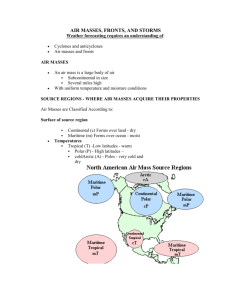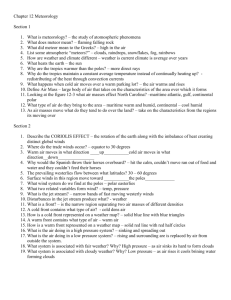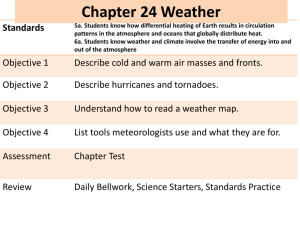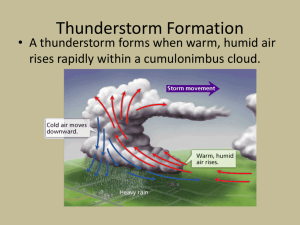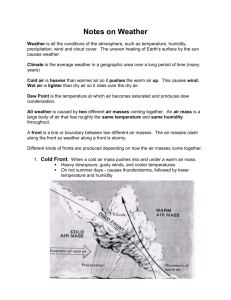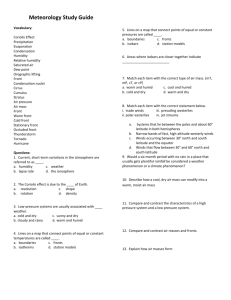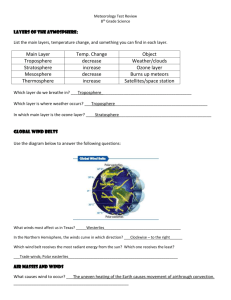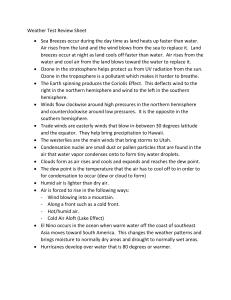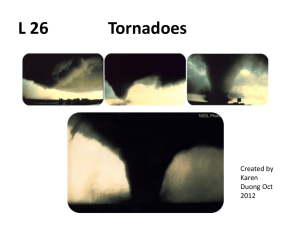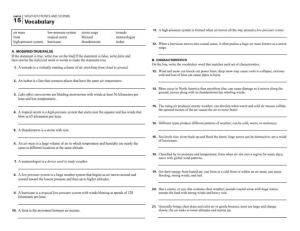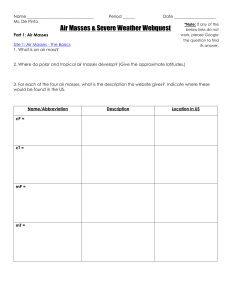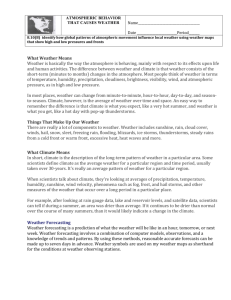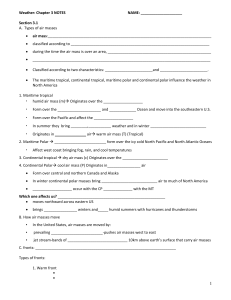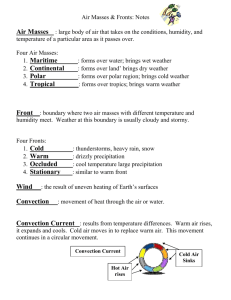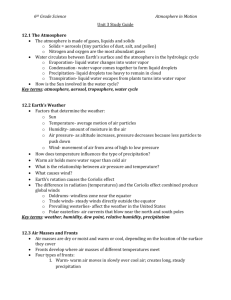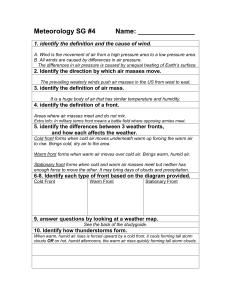Weather Patterns Review - Stephanie Dietterle Webpage
advertisement
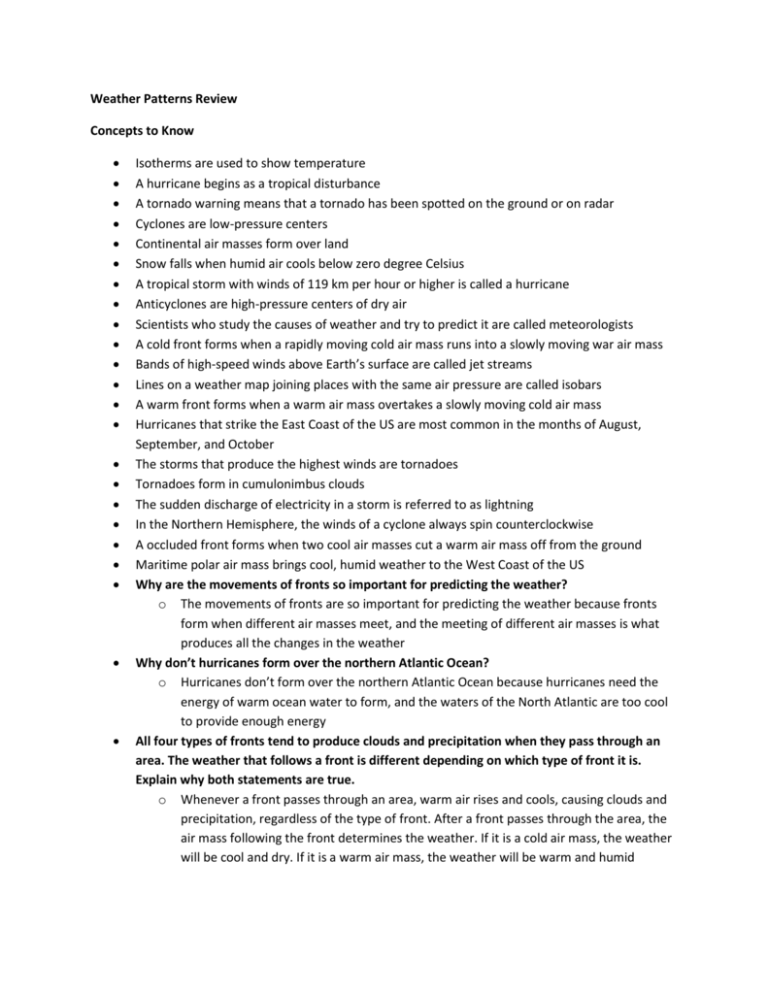
Weather Patterns Review Concepts to Know Isotherms are used to show temperature A hurricane begins as a tropical disturbance A tornado warning means that a tornado has been spotted on the ground or on radar Cyclones are low-pressure centers Continental air masses form over land Snow falls when humid air cools below zero degree Celsius A tropical storm with winds of 119 km per hour or higher is called a hurricane Anticyclones are high-pressure centers of dry air Scientists who study the causes of weather and try to predict it are called meteorologists A cold front forms when a rapidly moving cold air mass runs into a slowly moving war air mass Bands of high-speed winds above Earth’s surface are called jet streams Lines on a weather map joining places with the same air pressure are called isobars A warm front forms when a warm air mass overtakes a slowly moving cold air mass Hurricanes that strike the East Coast of the US are most common in the months of August, September, and October The storms that produce the highest winds are tornadoes Tornadoes form in cumulonimbus clouds The sudden discharge of electricity in a storm is referred to as lightning In the Northern Hemisphere, the winds of a cyclone always spin counterclockwise A occluded front forms when two cool air masses cut a warm air mass off from the ground Maritime polar air mass brings cool, humid weather to the West Coast of the US Why are the movements of fronts so important for predicting the weather? o The movements of fronts are so important for predicting the weather because fronts form when different air masses meet, and the meeting of different air masses is what produces all the changes in the weather Why don’t hurricanes form over the northern Atlantic Ocean? o Hurricanes don’t form over the northern Atlantic Ocean because hurricanes need the energy of warm ocean water to form, and the waters of the North Atlantic are too cool to provide enough energy All four types of fronts tend to produce clouds and precipitation when they pass through an area. The weather that follows a front is different depending on which type of front it is. Explain why both statements are true. o Whenever a front passes through an area, warm air rises and cools, causing clouds and precipitation, regardless of the type of front. After a front passes through the area, the air mass following the front determines the weather. If it is a cold air mass, the weather will be cool and dry. If it is a warm air mass, the weather will be warm and humid Why don’t cities that receive lake-effect snow in the winter also receive lake-effect rain in the summer? o The waters of the Great Lakes are cooler than the surrounding land in the summer. Therefore, west winds blowing across the Great Lakes do not pick up moisture as they do in the winter, when the lakes are warmer than the surrounding land As the air in the center of an anticyclone falls toward Earth, it gets warmer. Why does this lead to low relative humidity? o As the air gets warmer, it can hold more moisture, leading to low relative humidity People often are evacuated when there are tornado warnings because tornadoes most often occur with too little advance warning for people to leave the area Know the symbols of a weather map, you will have to identify the type of weather that is being shown on one
